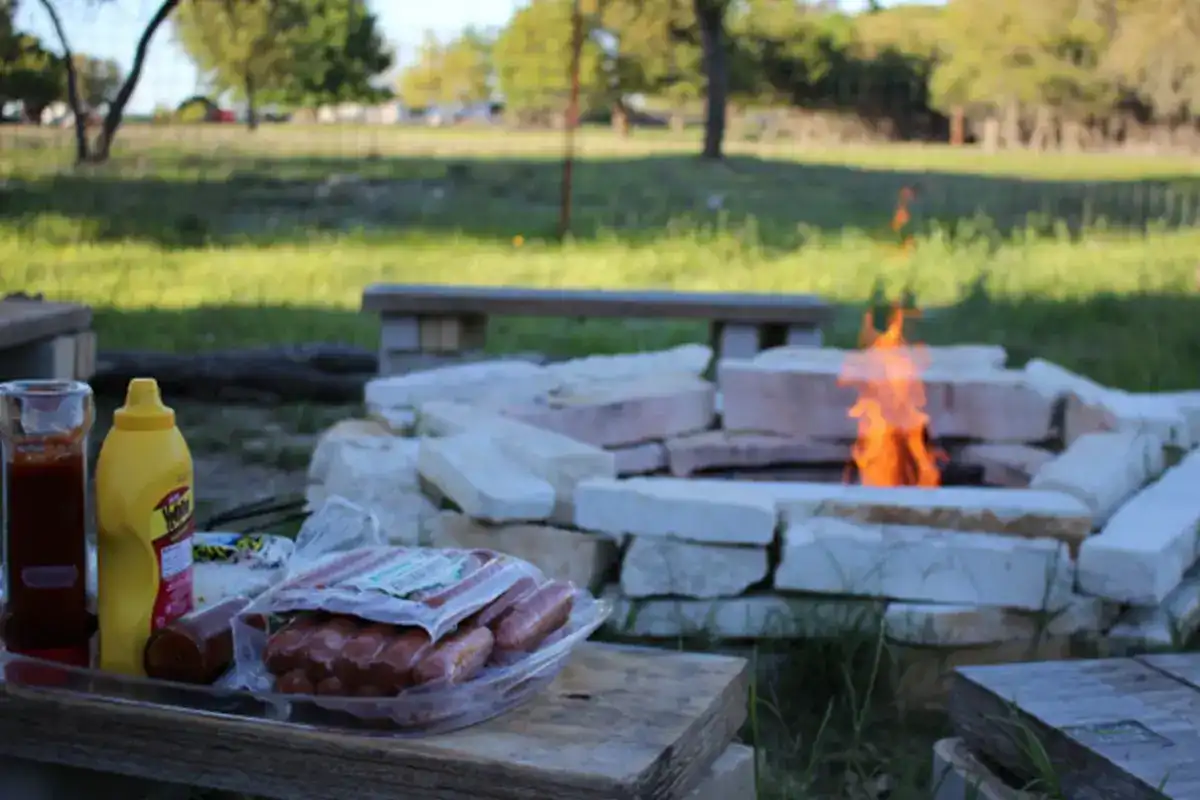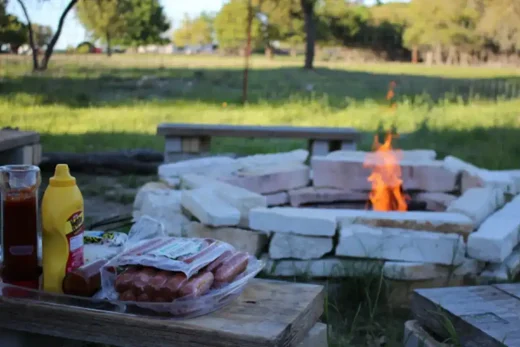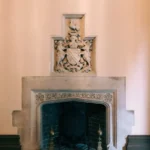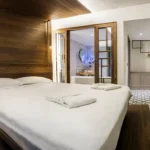Fire pits and Edinburgh’s stone legacy, an architect’s perspective on outdoor heating outdoor space advice
Fire Pits and Edinburgh’s Stone Legacy: An Architect’s Perspective on Outdoor Heating
19 March 2024
You are not unfamiliar with fire pits. Right? A plush, pretty stone pit in your backyard won’t be a bad option. The need for fire pits at present isn’t any less. However, the trend is more towards eco-friendly pits using alternative fuels instead of gas or wood for lesser environmental hazards.
Now, a word or two about Edinburgh’s stone architecture and the historical significance of the majestic buildings. Some of the finest sandstones are used to construct the magnificent buildings of Scotland’s Edinburgh, giving them an aesthetic appeal. Currently, fire pits are often made of metal tables and stone. How about combining the modern-day fire pit with Edinburgh’s stone? It would be a unique blend. Let’s read on to know more about the incorporation of Edinburgh stone legacy in the modern-day fire pits.
Know of the Architectural Heritage of Edinburgh’s Stone
As mentioned above, the sandstones used for constructing the buildings in Edinburgh are the best. The city stands amidst picturesque volcanic scenery and was carved from portions of an ancient volcano that is now extinct.
Sandstones played a significant role in developing the towns of Edinburgh—the Old and the New. One such heritage stone that needs to be mentioned is the Craigleith stone. The sandstones used for the Old Town were mostly pink and purple. Contrastingly, for the New Town, it was a blend of pale gray and white sandstones.
There was a decline in natural stone usage post-World War I, with concrete taking over the construction scenario. However, the demand for natural stone has eventually been revived over the past 30 years since people have realized that natural stone doesn’t just make buildings look appealing but also increases their durability. Using sandstone for modern-day Edinburgh buildings would give them that antique touch.
The historic Edinburgh Castle, one of Europe’s oldest places, is made of Craigleith Sandstone. Certain sections of the Palace of Holyroodhouse have also been constructed using this marvelous sandstone. The same goes for other important locations like the City Observatory, Dean Bridge, and Parliament Square. Edinburgh also has a host of red sandstone architecture – the King’s Theatre, Caledonian Hotel, Lauriston fire station, and Scottish National Portrait Gallery, to name a few.
Our discussion would only be complete by highlighting the Stone of Scone. This oblong red sandstone was used until the 13th century for the Spanish monarchs’ coronation. The stone has endured a series of incidents and events, and it currently lies in Edinburgh Castle’s Crown Room as a priceless treasure.
The Appeal of Fire Pits
Proper use of backyards, gardens, or outdoor spaces has become our thing, especially after the pandemic, when there were many restrictions on outside travel. We had to make maximum use of the resources available to us. The popularity of fire pits steeply rose during and after the pandemic. So, why are fire pits necessary in homes? Is it to enhance the aesthetic appeal, or is there any other utility? Let’s take a look.
- To many, firepits trigger nostalgic feelings, taking them down memory lane and reminding them of warm, cozy evenings around the fireplace.
- When you plan to socialize with your kith and kin without having to leave the comforts of your home, a fire pit is one of the best options. When you have a fire pit outdoors, you can spend longer hours in your yard or garden during late fall or winter as the warmth protects you from the chilly weather.
- Practicing mindfulness is essential for everyone to keep their anxiety levels in check. The role of fire pits in promoting mindfulness has been discussed extensively. Gazing at the fire for long has a calming effect on your mind. Watching the rhythmic movement of the flames and listening to the crackling sound of the burning logs create a mesmerizing impact on the mind.
- Firepits could light up your yard or garden even after darkness sets in. You wouldn’t have to rush indoors after sunset. Instead, a fire pit gracing the garden could transform it into one of the most happening places in your home to access throughout the day.
- If you are finding ways to lessen screen time for your kids and engage them more in entertaining activities, a fire pit is one exciting option. How about sitting by the pit listening to horror stories or playing exciting games? It would be a fun affair indeed.
Rustic Fire Pit Ideas with Stone Architecture
Firepits are made of metal, precast concrete, stone, and metal tables. Presently, they are available in various designs and shapes. However, a stone fire pit is always an enticing choice since it elevates the beauty of your garden to another level. There are some practical benefits as well.
Stone fire pits can retain heat for a long time and are durable. Now comes an important question—which stone should you choose? Some preferred natural stones include sandstone, granite, limestone, and slate.
We have already mentioned the role of sandstone in enhancing the artistry and durability of Edinburgh buildings. That’s why it is one of the most popular choices for constructing fire pits.
Above everything, sandstone adds elegance and beauty because of its grainy texture, unique patterns, and amazing colors. Another boon is it holds the perfect amount of heat needed—neither too much nor too little. This helps to keep you warm, but you won’t run the risk of getting overheated with a sandstone fire pit. Sandstone’s durability needs special mention. It can withstand immense heat without crumbling or crackling.
Sandstones made Edinburgh’s stone legacy more appealing and memorable, and having a fire pit made of this natural stone will definitely be a fulfilling experience.
Though our main focus here is sandstone, let’s have a word or two about other preferred options. Like sandstone, limestone is adept at withstanding heat and is durable. Limestone fire pits are also visually appealing. Granite is durable, strong, and heat-resistant, while slate offers a rustic look and fire-resistant properties.
Some Useful and Informative Tips for Fire Pits Keeping in Mind the Edinburgh Stone Legacy
When choosing a material for firepits, there are certain things to keep in mind to ensure you have the right product.
- The sandstones used for Edinburgh Castle and other prominent structures were of high quality and were noted for their durability. That’s the first thing to keep in mind when choosing firepits. If you’ve decided on pits made of natural stone, go for sandstone, limestone, slate, etc., as already mentioned above. They’ll last long. If we were to talk about other materials, steel fire pits are famous, too, as they are affordable, durable, and weather-resistant.
- If you’ve planned for a fire pit in the exterior of your home, you must pay attention to where to place it. That’s for your safety and that of others in the vicinity. Place it at a distance of 10-20 feet from structures like your home, fence, car shed, and neighboring yard. Keeping the fire pit at a distance from overhanging branches is also advisable. Also, clear the ground where you have placed the pit of wood shavings, dry leaves, and pine needles. This way, you could prevent a fire hazard.
- If talking about the fire pits’ shapes and designs, you could opt for the most stylish ones in the lot. If you plan for wood-burning models, round pits would be a great choice since they can emit heat evenly. So, if you have a lot of people gathering around the pit, all of your guests would get equal warmth. If you have a narrow patio, rectangular pits would be perfect. You could even adorn the ground surrounding the pit with gravel, as it would serve as a great seating space. Moreover, gravel is non-flammable, lessening fire hazards. For more design ideas on fire pits and chimneas, check out www.firepit.co.uk.
- You could arrange upholstered chairs surrounding the fire pit for more extensive styling. Try something innovative by arranging big rocks or wooden or stone benches around the pit.
Architects perspective on outdoor heating Conclusion
Be it the United Kingdom or other parts of the world, almost all permit installing fire pits in the backyard for recreational purposes. However, one must abide by rules and regulations and adhere to safety measures to prevent fire hazards. When you choose natural stones for fire pits, you get to keep the traditional touch alive.
The round design would give your pit the traditional touch, while geometric or linear shapes will add a touch of modernity. Follow the safety perimeters to the tee, and once all of that is sorted, you could have a surreal outdoor experience.
Comments on this guide to Fire Pits and Edinburgh’s Stone Legacy: An Architect’s Perspective on Outdoor Heating article are welcome.
Property Design
Contemporary Property Designs – recent architectural selection for Scotland below:
9 Benefits Of Investing In Greenhouses
Sustainable heating solutions for Edinburgh’s historic buildings
Comments / photos for the Fire Pits and Edinburgh’s Stone Legacy: An Architect’s Perspective on Outdoor Heating page welcome.





